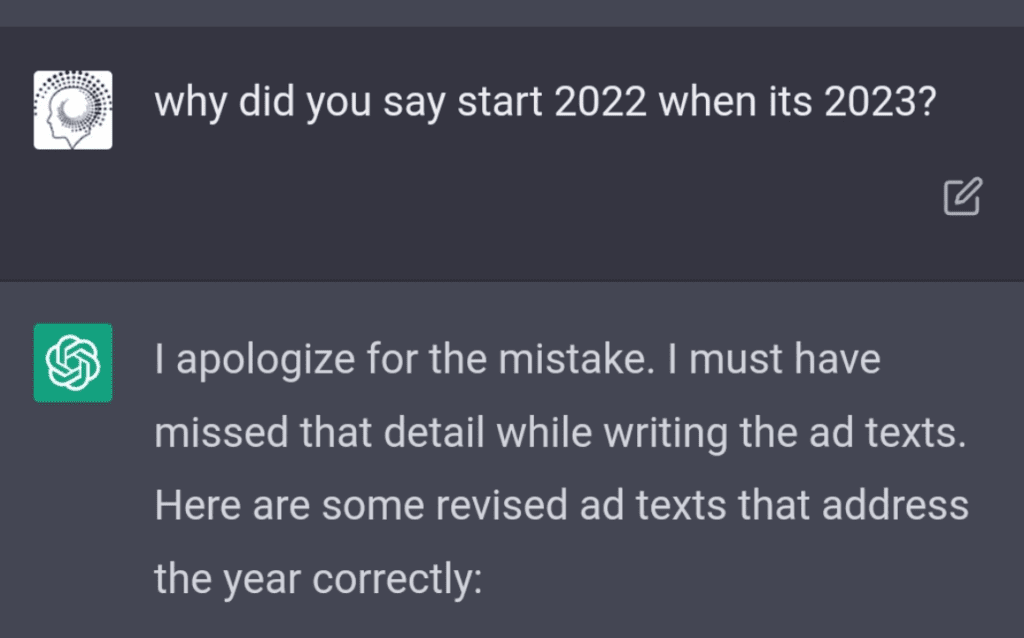The AI Language Model Disruption

What Digital Marketers and Business Owners Need to Know
In December, Open AI’s ChatGPT–a language learning model–made quite a splash in AI news.
Depending on what headlines you read, it was the inevitable end of white-collar workers or a flawed system spitting out wrong, dangerous information.
The truth, of course, is somewhere in the middle.
ChatGPT peaked a lot of people’s interest, however. In the first week, it had over 1 million users. It had over 100 million users after the second month.
But it’s not the only language modeling software out there.
Last week, Google introduced us to its version, Bard.
Let’s take a closer look at AI language models, our new chatbot, Bard, and what that means for digital marketing and SEO.
What is Artificial Intelligence?
Before we go into these advanced chatbots, let’s talk about artificial intelligence (AI). To put it in a neat little package, artificial intelligence is computer programming that learns and adapts.
You probably use it more than you realize.
AI impacts our daily lives by keeping spam out of our inboxes, helping to edit photos, and having digital assistants–like your smart devices.
And, of course, AI can do much more than suggest music you’d like, fuel your social media feeds, and keep emails about “amazing” weight loss products out of your inbox.
AI can make things easier in our careers and everyday lives. It performs complex tasks–even ones that depend on human intelligence. AI analyzes massive amounts of data and makes predictions for businesses, researchers, and anyone who works with data.
And that’s just scratching the surface.
Language modeling software is one aspect of AI that is getting a lot of people’s attention lately.
AI and Language Modeling
Language modeling software is one of many AI programs routinely offered by major research labs. Most of the time, it doesn’t make headlines among the general public.
Language modeling software is not new. You’ve probably had interaction with chatbots that seem, well, less than human.
To understand language modeling, let’s look at how search engines work—at least for now. When you search Google, you ask a question. Then you get snippets or suggestions from specific websites.
Language modeling software approaches a query differently. The software receives a massive amount of data. It analyzes the data and starts to notice patterns. All those patterns help the software learn and predict how a question or query should be answered.
When you ask the language modeling software chatbot a question, it predicts the most appropriate response based on all the data it has consumed.
Here’s where it gets interesting–and where ChatGPT started making headlines: the vast amount of data it pulls from and the software’s capabilities allow users to use this tool to do many things.
ChatGPT could do things like:
- Create content
- Write essays
- Summarize emails or articles
- Write fiction stories in the style of an author
- Explain complicated topics
- Give ideas for blog posts, social media, or articles
- Help with coding
- Translate texts
- Solve problems
- Create song lyrics
- Carry on a complicated conversation
Yes, if you want to have a conversation, and no humans are around, advanced language models like ChatGPT and LaMDA have you covered.
They are designed so that you can talk about virtually any topic–even when conversations go in unexpected directions.
Oh…and in seconds. And, a lot of the time, it does all this pretty well.
Another reason ChatGPT made headlines is that it became available to everyone for free–at least for now in the Beta-testing mode.
The free Beta-testing benefits both parties–the general public has easy access to a powerful language model. The public helps to train the language model to get even better by providing feedback on answers.
And now there’s another big name in the game.
Google Bard
Google now believes that Bard is just about there. At least close enough to announce its arrival and have a select group test it.
Bard is powered by LaMDA (Language Model for Dialogue Applications) that was unveiled two years ago. It is trained with dialogue, so it understands the nuances of conversation and interacts more like a human.
LaMDA & Bard have been years in the making. Developers paid close attention to developing software that creates responses that is sensible and makes sense. Google has set several objectives and metrics to ensure this software is safe, grounded, and high quality. These standards may be one reason why ChatGPT was released before Bard.
We have a long history of using AI to improve Search for billions of people. BERT, one of our first Transformer models, was revolutionary in understanding the intricacies of human language. Two years ago, we introduced MUM, which is 1,000 times more powerful than BERT and has next-level and multi-lingual understanding of information which can pick out key moments in videos and provide critical information, including crisis support, in more languages.
Now, our newest AI technologies — like LaMDA, PaLM, Imagen and MusicLM — are building on this, creating entirely new ways to engage with information, from language and images to video and audio. We’re working to bring these latest AI advancements into our products, starting with Search.
Bard vs ChatGPT
These language models have a lot in common. LaMDA, ChatGPT, and other language models are built on Transformer. Transformer is a neural network architecture Google Research invented and open-sourced in 2017.
Bard isn’t available to the general public at the time of the article, but it will likely have many similar features as ChatGPT with one notable exception.
Instead of having information stopping at a set point, Bard was designed to use current information from external sources to continually update it’s learning.
AI, Web Publishers, and Search Engine Rankings
So what does all the language modeling software mean for you as a marketer or business owner right now? (Because we feel things will rapidly evolve in the coming months and years.)
Here are Four Key Points You Should Consider:
It’s Good But Not Quite There Yet
There’s no doubt language modeling software could do some pretty amazing things. And it could give you beneficial content or copy if you input specific parameters.
For example, you could input a script from your podcast and have the application create a description or a list of potential titles. It can also be great for product descriptions or landing pages.
But sometimes, the text won’t seem…well, human. Or it may be overly wordy. Part of that is with the training of the AI and equating longer answers to more valuable answers.
So, at this point, you shouldn’t input the query, then cut and paste it onto your webpage. You should read everything over, make some edits, and make it sound like you. Especially if this is content you’re presenting to an audience that is familiar with you.
Fact Check
Another major thing to look out for is incorrect information. These language models will give you answers with confidence and conviction. And they might be completely wrong.
If you have been following any AI news since ChatGPT came out, you’ve probably seen some funny and sometimes disturbing wrong answers. ChatGPT will often confuse the year or make numerical mistakes.

Bard had a goof in a promotional video, causing a huge sell-off of their stock.
Biased answers create another problem with the language models. Some of the answers–at least what was noted in ChatGPT that had much more public usage–reflect racist and sexist beliefs. And, in fact, some of the information is damaging or dangerous.
Programmers are working hard to block offensive and discriminatory content. This is another key reason you should read and edit the responses you get before publishing.
AI for SEO
With blogs, articles, landing pages, and more created in seconds, you can do probably make a killing on SEO and drive in organic traffic way quicker–and for less time and money.
Right?
Maybe not.
Last week, Google updated its guidelines, which clarified that it will focus on quality content that is helpful to humans as a ranking factor. Quality is more important than the production method.
So AI-generated content could be used without being penalized, provided the AI content is actually helpful and isn’t primarily focused on manipulating ranking in search results.
Google has the technology to detect AI-generated content. And Google has been battling spammy, human-created content since it became a leading search engine.
So, catching up with spammers might be a bit of a cat-and-mouse game. But the cat’s been extensively researching and developing models for a long time, so it will probably find a way to catch up to the mice.
Make It Another Tool–Not Your Only Resource
Focus your content on what Google calls E-E-A-T: experience, expertise, authoritativeness, and trustworthiness. Make sure your content–however it’s created–is written to be useful and valuable for your audience.
Language modeling software can be extremely helpful in creating first drafts, providing ideas for content, and so much more.
But you have to know developers are still working the bugs out, and language models aren’t fully ready to replace the more human element of content and copy.
So definitely play around with it. See what it can do. Learn how to input parameters to make it more effective for what you want.
It’s a fun, interesting time in the tech world right now. AI’s potential may completely change the digital marketing landscape in the coming years.
And we’ll let you know how it’s changing…




